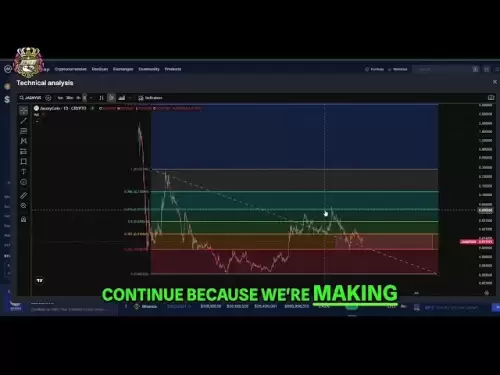-
 Bitcoin
Bitcoin $108,250.0992
0.11% -
 Ethereum
Ethereum $2,515.9404
0.03% -
 Tether USDt
Tether USDt $1.0003
0.00% -
 XRP
XRP $2.2166
-0.19% -
 BNB
BNB $656.5904
0.29% -
 Solana
Solana $147.4122
-0.58% -
 USDC
USDC $1.0000
-0.01% -
 TRON
TRON $0.2830
0.06% -
 Dogecoin
Dogecoin $0.1641
0.27% -
 Cardano
Cardano $0.5739
-0.19% -
 Hyperliquid
Hyperliquid $39.1463
-0.11% -
 Sui
Sui $2.8882
-0.02% -
 Bitcoin Cash
Bitcoin Cash $487.6428
0.31% -
 Chainlink
Chainlink $13.2097
0.07% -
 UNUS SED LEO
UNUS SED LEO $9.0308
0.10% -
 Avalanche
Avalanche $17.8608
0.13% -
 Stellar
Stellar $0.2379
-0.06% -
 Toncoin
Toncoin $2.7400
-0.39% -
 Shiba Inu
Shiba Inu $0.0...01144
-0.36% -
 Litecoin
Litecoin $87.5467
0.66% -
 Hedera
Hedera $0.1538
0.22% -
 Monero
Monero $315.5479
0.36% -
 Dai
Dai $1.0000
0.00% -
 Polkadot
Polkadot $3.3523
-0.71% -
 Ethena USDe
Ethena USDe $1.0003
0.01% -
 Bitget Token
Bitget Token $4.3960
-1.03% -
 Uniswap
Uniswap $7.2663
4.19% -
 Aave
Aave $272.8619
2.04% -
 Pepe
Pepe $0.0...09676
-0.18% -
 Pi
Pi $0.4586
-2.87%
How to set permissions for Bitfinex's API?
To automate trading or use third-party services on Bitfinex, set up API keys with specific permissions like Read, Write, and Withdraw, and secure them with IP whitelisting.
Apr 13, 2025 at 08:28 pm
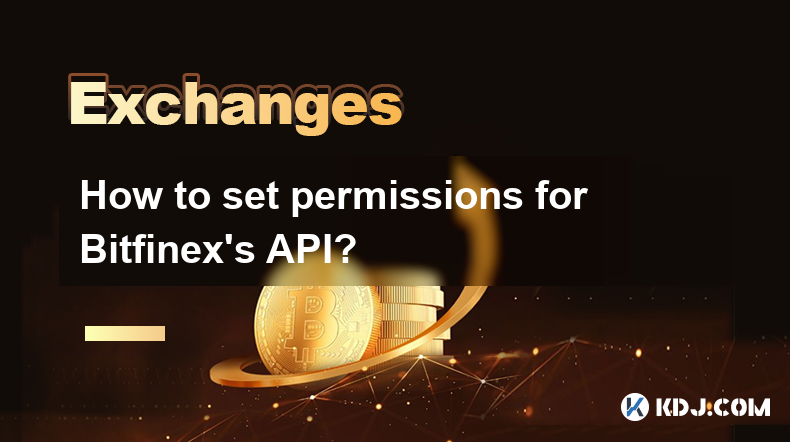
Setting permissions for Bitfinex's API is a crucial step for traders who want to automate their trading strategies, manage their accounts, or use third-party services. Bitfinex, one of the leading cryptocurrency exchanges, provides an API that allows users to interact with their platform programmatically. This article will guide you through the process of setting up and managing permissions for Bitfinex's API, ensuring you can control access to your account securely and efficiently.
Understanding Bitfinex API Permissions
Before you start setting up permissions, it's important to understand what they are and why they matter. API permissions on Bitfinex allow you to specify what actions an API key can perform on your behalf. These actions include reading account balances, placing orders, withdrawing funds, and more. By carefully managing these permissions, you can ensure that only the necessary functions are accessible to your API key, reducing the risk of unauthorized access or misuse.
Creating an API Key on Bitfinex
To set permissions for Bitfinex's API, you first need to create an API key. Here’s how you can do it:
- Log into your Bitfinex account and navigate to the API section, which can usually be found under the Account or Settings menu.
- Click on Create New Key. You will be prompted to enter a label for your key, which helps you identify its purpose.
- You will then be asked to set permissions for your new key. These permissions include Read, Write, and Withdraw. Each of these permissions controls different aspects of your account access.
Setting Permissions for Your API Key
When setting permissions, you need to decide what level of access you want to grant to your API key. Here are the permissions you can configure:
- Read: This permission allows the API key to view your account information, including balances, orders, and trade history. It is the most basic permission and is essential for any API usage.
- Write: With this permission, the API key can place orders, cancel orders, and perform other actions that modify your account. This is necessary for trading bots or automated trading systems.
- Withdraw: This is the most sensitive permission, as it allows the API key to initiate withdrawals from your account. You should only enable this permission if absolutely necessary and with extreme caution.
To set these permissions:
- In the Create New Key dialog, you will see checkboxes for each permission.
- Check the boxes for the permissions you want to grant. For example, if you are setting up a trading bot, you might check Read and Write but leave Withdraw unchecked.
- After selecting your permissions, click Create to generate your API key.
Managing and Securing Your API Key
Once your API key is created, it’s important to manage and secure it properly. Here are some steps to ensure your key remains safe:
- Store your API key securely: Never share your API key with anyone, and store it in a secure location, such as an encrypted file or a secure password manager.
- Use IP whitelisting: Bitfinex allows you to restrict API key access to specific IP addresses. This adds an extra layer of security by ensuring that only requests from trusted IP addresses can use your key.
- Monitor your API key usage: Regularly check the activity logs for your API key to ensure it is being used as intended. If you notice any suspicious activity, you can immediately revoke the key.
To set up IP whitelisting:
- Go to the API section of your Bitfinex account.
- Find your API key and click on Edit.
- In the IP Whitelist section, enter the IP addresses you want to allow access from.
- Save your changes.
Revoking and Updating API Keys
If you need to change the permissions of an existing API key or if you suspect it has been compromised, you can revoke and update it. Here’s how:
- Navigate to the API section of your Bitfinex account.
- Find the API key you want to manage and click on Revoke to deactivate it.
- If you need to update permissions, you can create a new key with the desired permissions and then revoke the old key.
Using Your API Key with Third-Party Services
Many traders use their Bitfinex API keys with third-party services, such as trading bots or portfolio management tools. When doing so, it’s important to understand how these services use your API key and what permissions they require.
- Check the documentation: Before connecting your API key to a third-party service, review their documentation to understand what permissions they need and how they will use your key.
- Grant minimal permissions: Only grant the permissions that the service requires. For example, if a service only needs to read your account data, do not grant write or withdraw permissions.
- Regularly review permissions: Periodically review the permissions you have granted to third-party services and revoke any that are no longer necessary.
Frequently Asked Questions
Q: Can I have multiple API keys with different permissions on Bitfinex?
A: Yes, Bitfinex allows you to create multiple API keys, each with its own set of permissions. This is useful if you need to grant different levels of access to different services or applications.
Q: What should I do if I suspect my API key has been compromised?
A: If you suspect your API key has been compromised, immediately revoke the key from your Bitfinex account. Then, create a new key with the necessary permissions and update any services or applications that were using the old key.
Q: How often should I review my API key permissions?
A: It’s a good practice to review your API key permissions at least once a month or whenever you add or remove a third-party service. This helps ensure that your permissions are up to date and that you are not exposing your account to unnecessary risks.
Q: Can I use the same API key for multiple third-party services?
A: While it is technically possible to use the same API key for multiple services, it is not recommended. Each service may require different permissions, and using the same key increases the risk of compromising your account. It’s better to create separate keys for each service with the minimal permissions required.
Disclaimer:info@kdj.com
The information provided is not trading advice. kdj.com does not assume any responsibility for any investments made based on the information provided in this article. Cryptocurrencies are highly volatile and it is highly recommended that you invest with caution after thorough research!
If you believe that the content used on this website infringes your copyright, please contact us immediately (info@kdj.com) and we will delete it promptly.
- BNB, Nano Labs, and Binance: A $160 Million Crypto Play
- 2025-07-06 12:30:13
- Bitcoin, Taxing, and Fund Managers: Navigating the Crypto Maze in NYC
- 2025-07-06 12:50:14
- Mercado Bitcoin, Tokenization, and XRP Ledger: A New Era for Global Finance
- 2025-07-06 13:50:13
- Debt Ceiling, Trump, and Bitcoin's Allure: A New York Minute on Fiscal Policy
- 2025-07-06 12:30:13
- BlockDAG Presale: Aiming for High Returns in a Crowded Crypto Space
- 2025-07-06 14:10:13
- Bitcoin, Ethereum, and Crypto Gains: What's Hot in the NYC Crypto Scene?
- 2025-07-06 13:10:15
Related knowledge
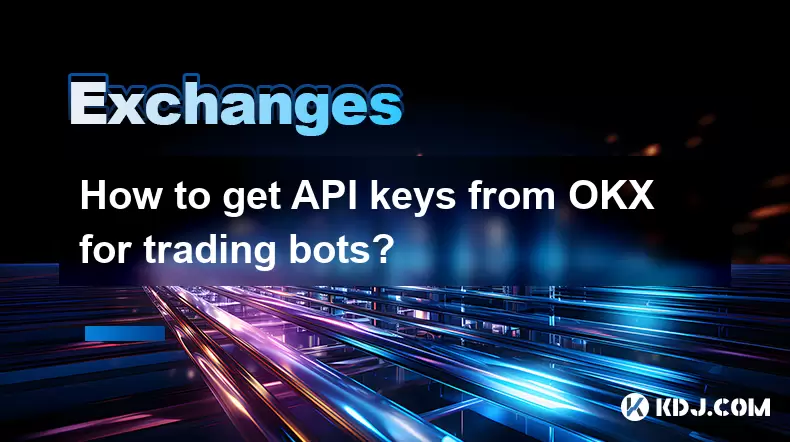
How to get API keys from OKX for trading bots?
Jul 03,2025 at 07:07am
Understanding API Keys on OKXTo interact with the OKX exchange programmatically, especially for building or running trading bots, you need to obtain an API key. An API (Application Programming Interface) key acts as a secure token that allows your bot to communicate with the exchange's servers. On OKX, these keys come with customizable permissions such ...
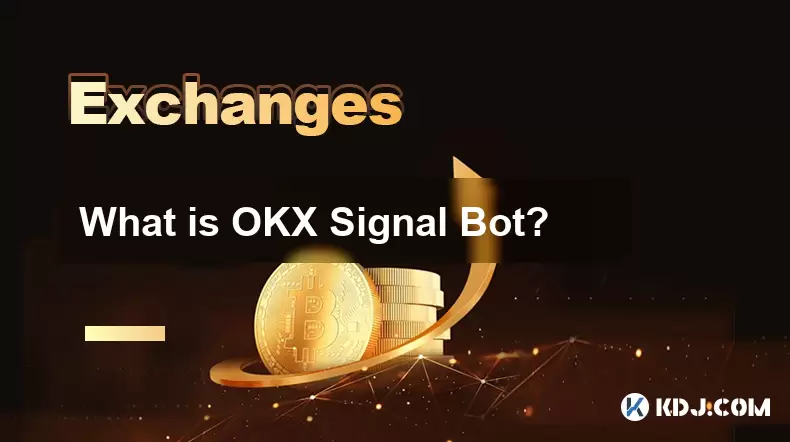
What is OKX Signal Bot?
Jul 02,2025 at 11:01pm
Understanding the Basics of OKX Signal BotThe OKX Signal Bot is a feature within the OKX ecosystem that provides users with automated trading signals and execution capabilities. Designed for both novice and experienced traders, this bot helps identify potential trading opportunities by analyzing market trends, technical indicators, and historical data. ...
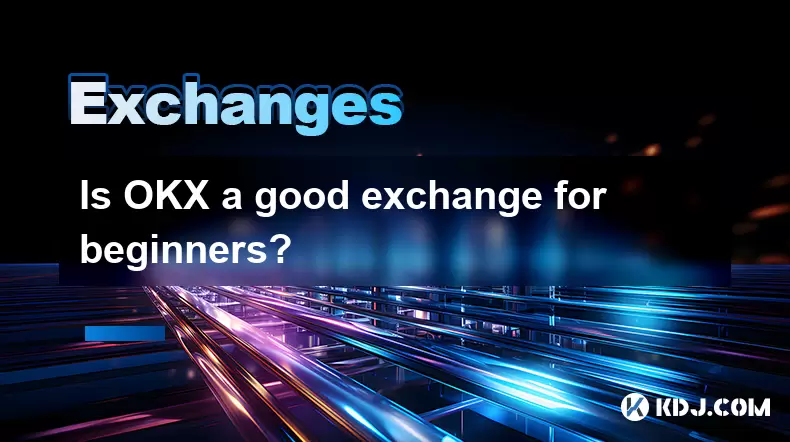
Is OKX a good exchange for beginners?
Jul 03,2025 at 05:00pm
What Is OKX and Why Is It Popular?OKX is one of the leading cryptocurrency exchanges globally, known for its robust trading infrastructure and a wide variety of digital assets available for trading. It supports over 300 cryptocurrencies, including major ones like Bitcoin (BTC), Ethereum (ETH), and Solana (SOL). The platform has gained popularity not onl...
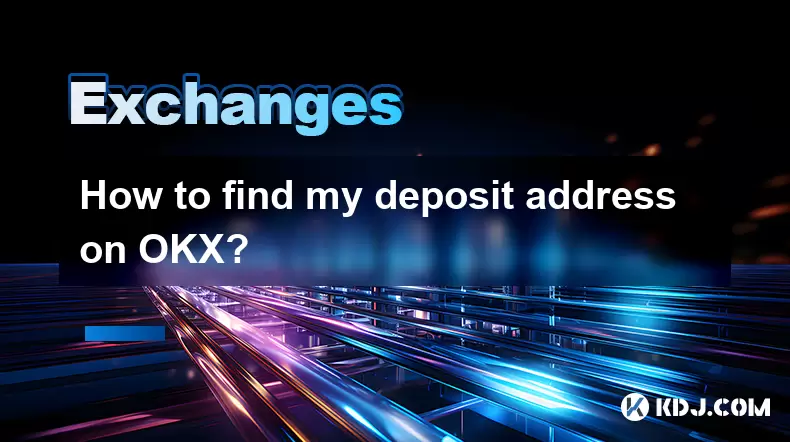
How to find my deposit address on OKX?
Jul 06,2025 at 02:28am
What is a Deposit Address on OKX?A deposit address on OKX is a unique alphanumeric identifier that allows users to receive cryptocurrencies into their OKX wallet. Each cryptocurrency has its own distinct deposit address, and using the correct one is crucial to ensure funds are received properly. If you're looking to transfer digital assets from another ...
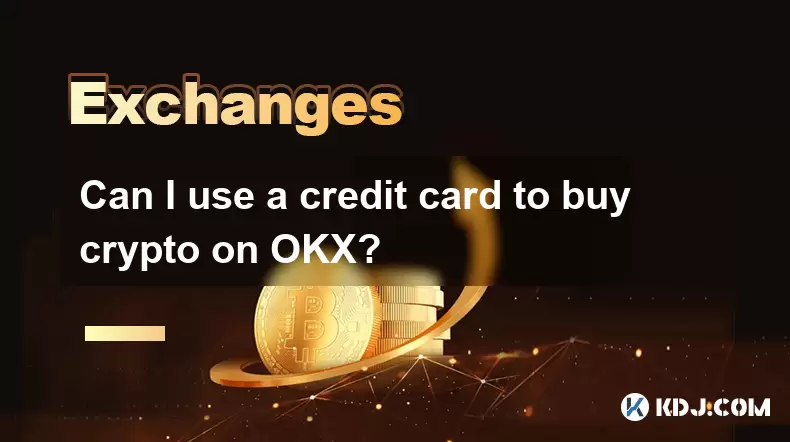
Can I use a credit card to buy crypto on OKX?
Jul 04,2025 at 04:28am
Understanding OKX and Credit Card PaymentsOKX is one of the leading cryptocurrency exchanges globally, offering a wide range of services including spot trading, derivatives, staking, and more. Users often wonder whether they can use a credit card to buy crypto on OKX, especially if they are new to the platform or looking for quick ways to enter the mark...
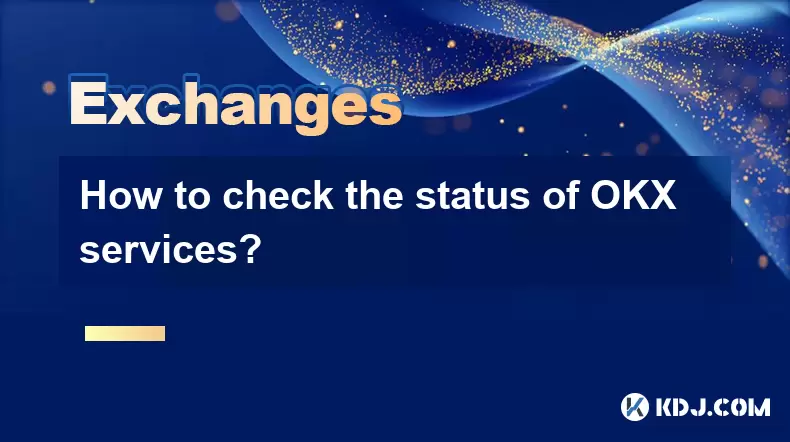
How to check the status of OKX services?
Jul 02,2025 at 11:14pm
What is OKX, and Why Checking Service Status Matters?OKX is one of the world’s leading cryptocurrency exchanges, offering services such as spot trading, futures trading, staking, and more. With millions of users relying on its platform for daily transactions, it's crucial to know how to check the status of OKX services. Downtime or maintenance can affec...

How to get API keys from OKX for trading bots?
Jul 03,2025 at 07:07am
Understanding API Keys on OKXTo interact with the OKX exchange programmatically, especially for building or running trading bots, you need to obtain an API key. An API (Application Programming Interface) key acts as a secure token that allows your bot to communicate with the exchange's servers. On OKX, these keys come with customizable permissions such ...

What is OKX Signal Bot?
Jul 02,2025 at 11:01pm
Understanding the Basics of OKX Signal BotThe OKX Signal Bot is a feature within the OKX ecosystem that provides users with automated trading signals and execution capabilities. Designed for both novice and experienced traders, this bot helps identify potential trading opportunities by analyzing market trends, technical indicators, and historical data. ...

Is OKX a good exchange for beginners?
Jul 03,2025 at 05:00pm
What Is OKX and Why Is It Popular?OKX is one of the leading cryptocurrency exchanges globally, known for its robust trading infrastructure and a wide variety of digital assets available for trading. It supports over 300 cryptocurrencies, including major ones like Bitcoin (BTC), Ethereum (ETH), and Solana (SOL). The platform has gained popularity not onl...

How to find my deposit address on OKX?
Jul 06,2025 at 02:28am
What is a Deposit Address on OKX?A deposit address on OKX is a unique alphanumeric identifier that allows users to receive cryptocurrencies into their OKX wallet. Each cryptocurrency has its own distinct deposit address, and using the correct one is crucial to ensure funds are received properly. If you're looking to transfer digital assets from another ...

Can I use a credit card to buy crypto on OKX?
Jul 04,2025 at 04:28am
Understanding OKX and Credit Card PaymentsOKX is one of the leading cryptocurrency exchanges globally, offering a wide range of services including spot trading, derivatives, staking, and more. Users often wonder whether they can use a credit card to buy crypto on OKX, especially if they are new to the platform or looking for quick ways to enter the mark...

How to check the status of OKX services?
Jul 02,2025 at 11:14pm
What is OKX, and Why Checking Service Status Matters?OKX is one of the world’s leading cryptocurrency exchanges, offering services such as spot trading, futures trading, staking, and more. With millions of users relying on its platform for daily transactions, it's crucial to know how to check the status of OKX services. Downtime or maintenance can affec...
See all articles





















